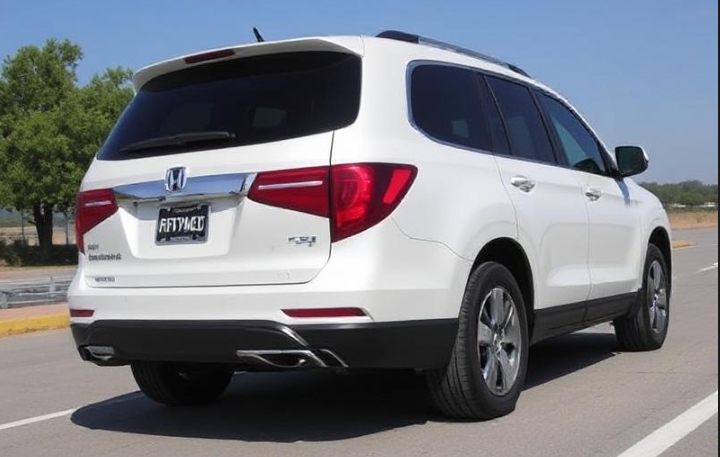The Evolution of the Chevrolet Tracker
The Chevrolet Tracker has long been recognized as a versatile and affordable compact SUV, appealing to drivers seeking practicality, versatility, and a touch of style. Over the decades, the model has undergone significant transformations, reflecting shifts in consumer preferences, technological advancements, and global automotive trends. This article provides a detailed overview of the Chevrolet Tracker’s evolution, including its production years, model variations, and trim levels.
Origins and Early Models (1988–2004)
Introduction and First Generation (1988–1998)
The Chevrolet Tracker’s origins trace back to the late 1980s. Originally developed as a sibling model to the Suzuki Vitara (also known as the Suzuki Sidekick in some markets), the first-generation Chevrolet Tracker was launched in 1988. This compact SUV was primarily aimed at North American markets but was also available in various other regions under different badges.
Design and Features:
- Body Style: Two-door and four-door SUV
- Platform: Based on Suzuki’s Sidekick/Vitara platform
- Engines: Initially equipped with a 1.6L I4 engine producing around 80–95 horsepower, paired with a 5-speed manual transmission; a 3-speed automatic was later introduced.
- Drivetrain: Available with rear-wheel drive (RWD) and four-wheel drive (4WD) configurations, with part-time 4WD systems.
Trim Levels:
- Base: Basic features with minimal amenities.
- Sport: Included enhancements like alloy wheels, upgraded interior trims, and optional 4WD.
- Luxury/LS: Featured optional leather upholstery, power windows, and upgraded audio systems.
During this period, the Tracker was appreciated for its compact size, off-road capability, and affordability. Its design was utilitarian, with a boxy shape typical of SUVs of the era.
Second Generation and Global Expansion (2004–2009)
Second Generation (2004–2009)
The second-generation Chevrolet Tracker marked a significant shift in design, positioning the model as a more refined and modern compact SUV. However, its availability varied by market.
North American Market:
By 2004, General Motors (GM) withdrew the Tracker from the North American market, replacing it with the Chevrolet Equinox and other models, but the Tracker persisted in other regions.
Global Markets (Brazil, Asia, and Europe):
In markets like Brazil, China, and parts of Asia, the Tracker continued to be produced, often based on Suzuki’s models but under the Chevrolet badge.
Design and Features:
- Platform: Based on the Suzuki Vitara (also called Suzuki Escudo in some regions)
- Body Style: 3-door and 5-door variants
- Engines: 1.6L and 2.0L four-cylinder engines, with both manual and automatic transmissions. For instance, the 1.6L engine produced approximately 106 horsepower, while the 2.0L offered up to 124 horsepower.
- Drivetrain: 4WD systems were common, with some markets offering simplified RWD options.
Trim Levels:
- LS: Basic trim, with essential features, manual windows, and minimal interior amenities.
- LT: Mid-range trim offering power windows, improved audio, and optional leather seating.
- LTZ / LTZ Plus: Higher trims with features like alloy wheels, fog lights, and upgraded interior materials.
In some markets, the Tracker was marketed as a sporty or off-road-oriented vehicle, with special editions emphasizing ruggedness.
The Global SUV and Crossovers Era (2009–2017)
Continued Production and Variants
The Tracker’s production continued in various countries, especially in South America, Asia, and Africa. During this period, the model saw incremental updates, especially in terms of safety, comfort, and technology.
Key Features and Changes:
- Design: Slight facelift with redesigned front grille, bumpers, and headlights.
- Engines: Introduction of more efficient engines, including 1.8L variants and, in some markets, diesel options.
- Interior: Improved cabin materials, increased cargo capacity, and the integration of modern infotainment systems in later years.
- Safety: Addition of airbags, ABS, and stability control in newer models.
Trim Levels:
- LS: Entry-level, basic features
- LT: Mid-range with additional comfort features
- LTZ / LTZ Plus: Top trims offering luxury features, including leather upholstery, alloy wheels, and advanced sound systems
- Special Editions: Sometimes offered with off-road packages or sporty accents.
This era solidified the Tracker’s reputation as a reliable, budget-friendly SUV suitable for urban driving and light off-road use.
The Transition to the Global Chevrolet Trax (2017–Present)
The New Generation (2016/2017–Present)
In 2016, GM introduced a new model globally called the Chevrolet Trax, which effectively replaced the Tracker in many markets, including North America and Europe. However, in some regions, the Tracker nameplate persisted, especially in South America and parts of Asia.
Design and Features:
- Platform: Based on GM’s Gamma II platform, shared with Opel/Vauxhall Mokka and Buick Encore
- Body Style: 5-door compact SUV
- Engines: Turbocharged 1.4L and 1.2L gasoline engines, with diesel options in some markets
- Transmission: 6-speed manual or 6-speed automatic transmissions
- Drive Systems: Front-wheel drive (FWD) standard, with optional all-wheel drive (AWD)
Trim Levels and Variants:
In North America and Europe, the Trax/Kaltera models are typically offered in:
- LS: Base model, with essential features
- LT: Mid-range, adding features like improved infotainment, cruise control, and alloy wheels
- Premier / High Country: Top trims with leather seats, advanced infotainment, parking sensors, and driver assistance features
In South America and other regions, the Tracker nameplate was revitalized with similar features, often with localized trims and packages.
Special Editions and Market Variations
Throughout its evolution, the Chevrolet Tracker has seen numerous special editions and market-specific variations, often tailored to regional consumer preferences.
- Tracker Xtreme / Off-Road Editions: Emphasizing ruggedness with skid plates, roof racks, and off-road tires.
- Sport Editions: Featuring sportier styling cues, such as distinctive body kits and interior accents.
- Luxury Packages: Including leather upholstery, advanced safety features, and premium audio systems.
The availability of certain trim levels and features has varied widely depending on regional regulations, market demand, and local manufacturing.
Summary of Production Years and Key Models
| Production Period | Model Name | Notable Features | Markets |
|---|---|---|---|
| 1988–1998 | First-generation Chevrolet Tracker | Basic SUV, RWD/4WD options, Suzuki platform | North America, Asia, Europe |
| 2004–2009 | Second-generation Tracker | Modern design, more refined, global markets | South America, Asia, Europe |
| 2009–2017 | Continued global production | Incremental updates, safety and tech improvements | South America, Asia, Africa |
| 2016–present | Chevrolet Trax / Tracker (region-dependent) | Compact crossover, turbo engines, modern tech | North America, Europe, Asia, South America |
.
A Look at Chevrolet’s Most Powerful Engines
.
Conclusion
The Chevrolet Tracker has evolved significantly since its inception in the late 1980s. Starting as a utilitarian, compact off-road vehicle based on Suzuki’s platforms, it transitioned into a modern, globally marketed crossover SUV. Its various generations and trims reflect shifting consumer preferences—from rugged off-road capabilities to urban comfort and advanced technology.
In its current form as the Chevrolet Trax (or Tracker in certain regions), the model continues to adapt, offering efficient engines, contemporary styling, and safety features to meet the demands of a diverse global market. Its versatility and affordability have kept it popular across numerous countries for over three decades.
Understanding the Tracker’s history provides insight into the broader evolution of compact SUVs and GM’s strategic approach to global vehicle offerings. As automotive technology advances and market preferences shift, the Chevrolet Tracker’s legacy as a dependable, accessible SUV remains firmly established.






